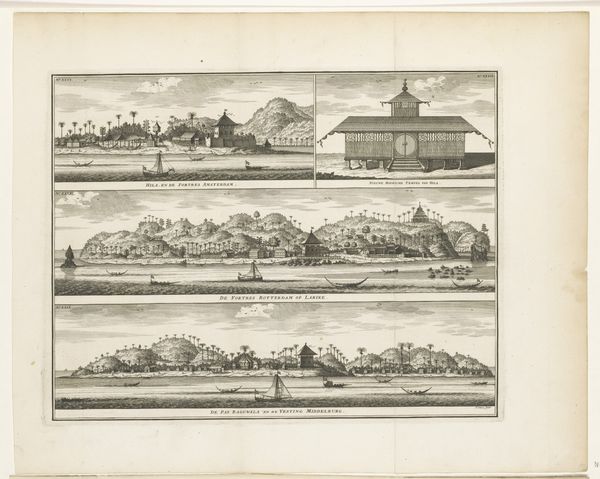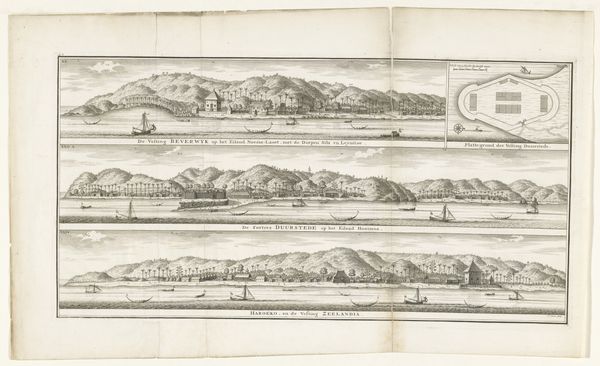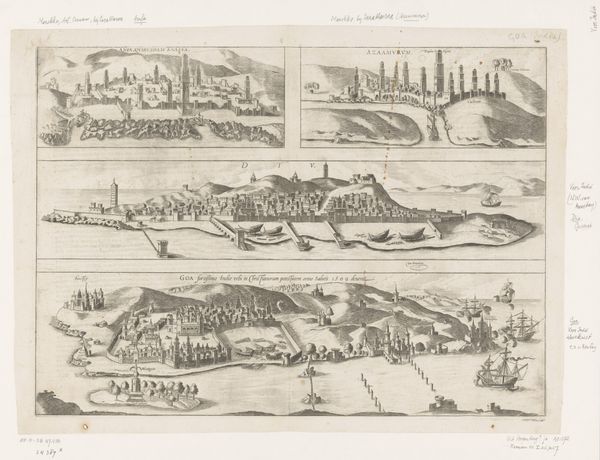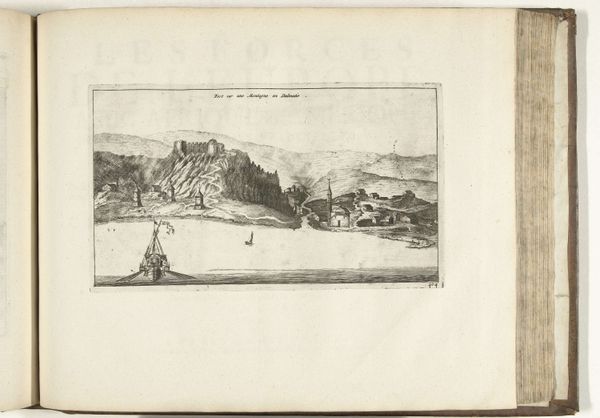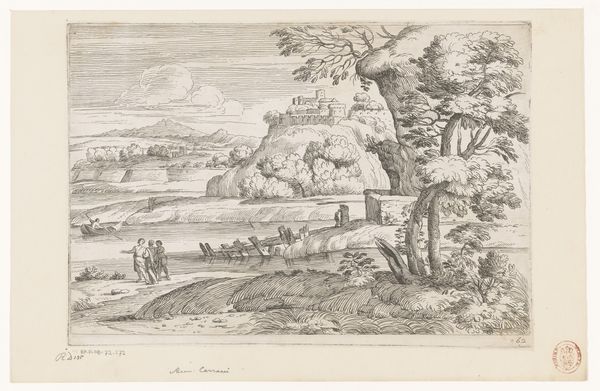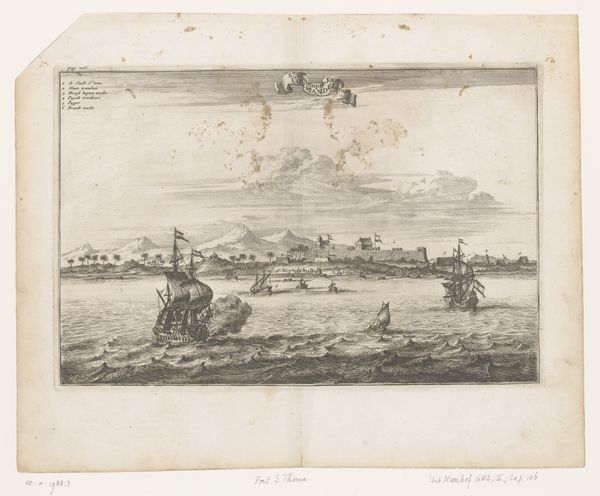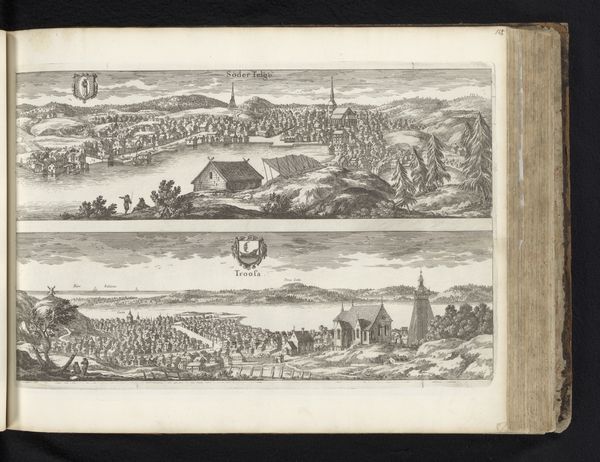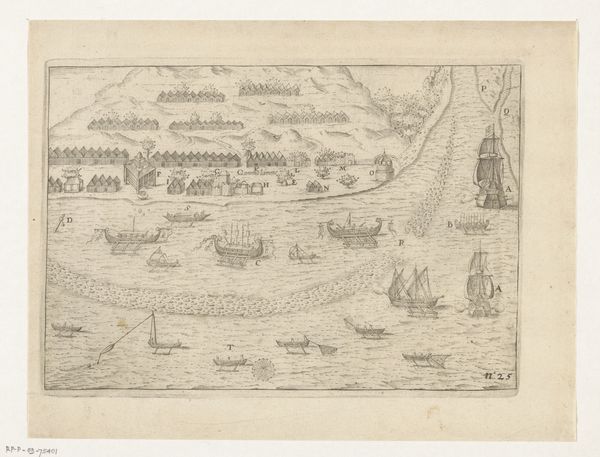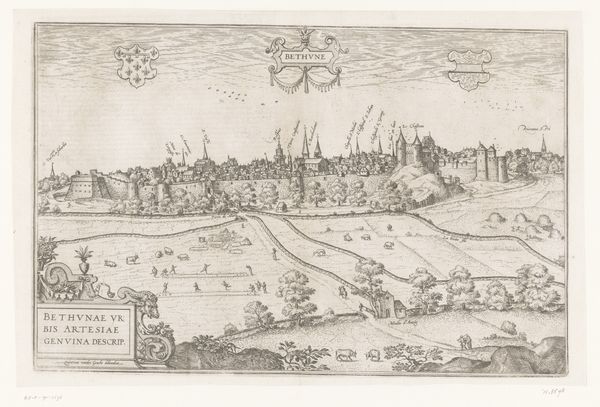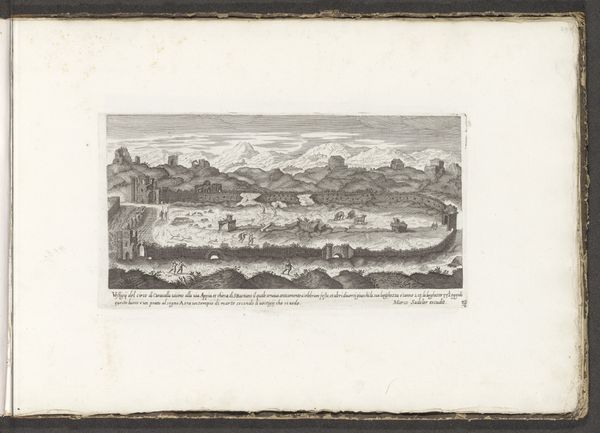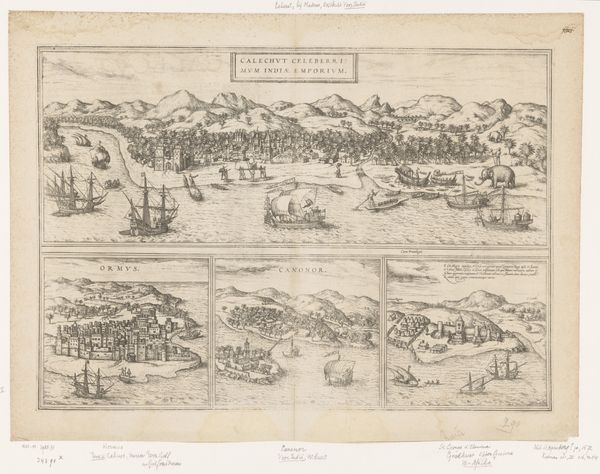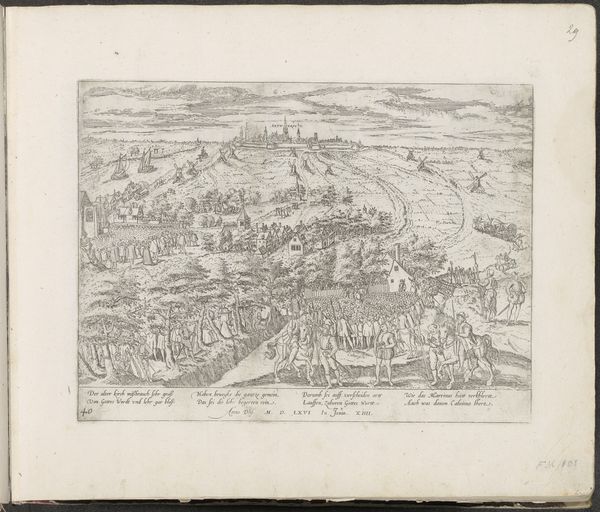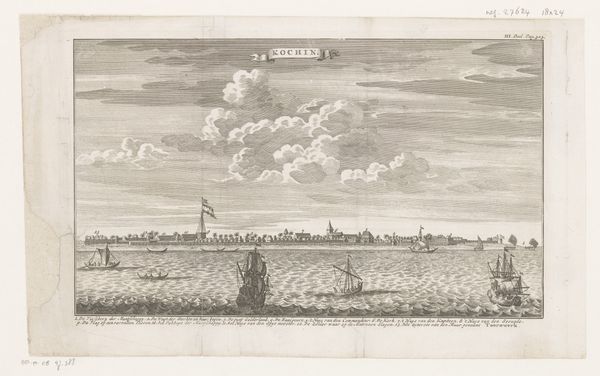
print, engraving
#
dutch-golden-age
# print
#
old engraving style
#
landscape
#
history-painting
#
engraving
Dimensions: height 305 mm, width 385 mm
Copyright: Rijks Museum: Open Domain
Curator: Welcome. Here we have "Verschillende versterkingen van de VOC op Ceram," an engraving from the period of 1722 to 1724, crafted by Frederik Ottens. Editor: My initial response is that the arrangement, this sequential stacking of vistas, provides a sense of order imposed on a far-off place. Each view seems meticulously delineated. Curator: Indeed. As an Iconographer, I find these carefully etched fortresses highly symbolic. Each view represents the consolidation of Dutch power in Ceram through military architecture and naval presence. Editor: Precisely, but from a Formalist perspective, look at the repeating motifs: the horizontal lines of the water, the varied textures differentiating the foliage and architecture, creating a visual rhythm, wouldn't you agree? The arrangement emphasizes Ottens's sophisticated understanding of spatial representation, as each plane contributes to the overall depth. Curator: Certainly. Each carefully crafted ship can be understood as a symbol of dominance but the strategic placement of forts and harbors further suggests a calculated plan for resource extraction and trade control. Editor: Let's look more closely at Ottens' lines and texture. The artist’s conscious deployment of linear hatching grants this image a kind of representational efficiency, no? Every stroke dictates the form. Curator: And from a thematic vantage, we consider Dutch colonial history, recognizing the psychological impact of imposing a foreign presence on indigenous populations. I think Ottens subtly conveys this through the somewhat alien appearance of the European architecture contrasted with the natural landscape. Editor: A key compositional element for me is that the engraving's monochromatic rendering allows viewers to decode these vistas into shapes, pure form, to allow us to reflect on how a scene can be constructed. Curator: A somber reflection, perhaps, given what these fortified outposts truly signified for the local populations. However, looking beyond, these prints document the cultural encounters—both positive and negative—between Europe and Southeast Asia. Editor: For me, I recognize a calculated, visually intriguing exercise in spatial organization. Curator: I would say we are observing more than mere calculation; we are looking at coded signifiers. Dutch influence at its height now reduced to an image, yet still retaining all of its encoded meaning.
Comments
No comments
Be the first to comment and join the conversation on the ultimate creative platform.
